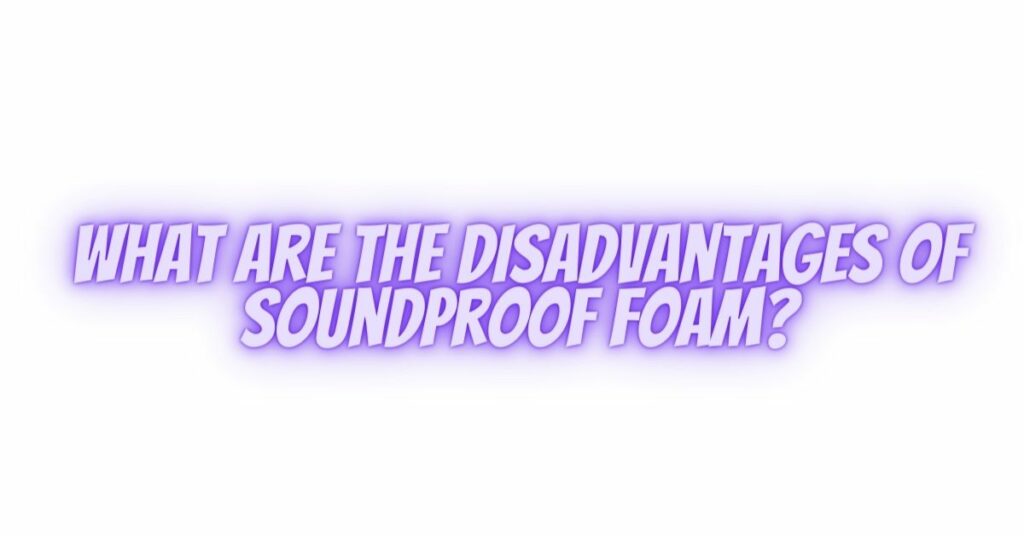Soundproof foam, also known as acoustic foam or sound-absorbing foam, is a popular solution for reducing noise and improving sound quality in various environments. It is widely used in recording studios, home theaters, offices, and even homes. While soundproof foam offers several advantages, it is essential to be aware of its disadvantages and limitations. In this comprehensive article, we will explore the drawbacks of soundproof foam, helping you make informed decisions when considering its use for noise control and acoustic improvement.
- Limited Low-Frequency Sound Absorption
One of the significant drawbacks of soundproof foam is its limited effectiveness in absorbing low-frequency sounds, including bass frequencies. Soundproof foam is typically more effective at mid to high frequencies, leaving low frequencies relatively unaffected. This limitation can be problematic in situations where noise reduction in the lower range is essential.
- Incomplete Sound Isolation
Soundproof foam primarily works by absorbing sound waves and reducing reflections within a room. However, it does not provide sound isolation in the same way as materials like mass-loaded vinyl or acoustic barriers. Soundproof foam may help reduce echo and improve acoustics within a room, but it won’t prevent sound from traveling through walls or floors.
- Shortcomings in High-Noise Environments
In high-noise environments, such as busy urban areas, manufacturing facilities, or venues with loud live music, soundproof foam alone may not provide adequate noise reduction. The foam is more suitable for controlling indoor acoustics and minimizing sound reflections rather than blocking external noise.
- Cost Considerations
Quality soundproof foam can be relatively expensive, especially if you need a large quantity for a room or studio. Additionally, to achieve significant sound improvement, you may need to use multiple acoustic treatments, which can further increase the cost.
- Aesthetics and Decor
While soundproof foam comes in various colors and designs, its appearance is not always in line with the desired aesthetics of a room. In some cases, integrating soundproof foam into a decor scheme can be challenging, and it may be perceived as unattractive or out of place.
- Maintenance and Cleaning
Over time, soundproof foam can accumulate dust, dirt, and other particles. Cleaning the foam can be difficult, and improper cleaning methods may damage its acoustic properties. Regular maintenance is necessary to ensure the foam continues to function effectively.
- Fire Safety Concerns
Some soundproof foams are not fire-resistant, and they can pose a fire hazard if not treated with fire-resistant coatings. It is essential to consider fire safety regulations and ensure that the foam used in public or commercial spaces complies with safety standards.
- Health and Allergies
Certain types of soundproof foam may contain chemicals or materials that can potentially cause allergies or health concerns, particularly when foam particles are released into the air. It’s crucial to choose foam that is safe for the intended environment.
- DIY Installation Challenges
Improper installation of soundproof foam can lead to reduced effectiveness. Achieving the best results requires an understanding of acoustics and the correct placement and spacing of the foam panels. DIY installations may not always yield the desired outcomes.
Conclusion
Soundproof foam is a valuable tool for controlling acoustics and reducing noise reflections within indoor spaces. However, it is essential to be aware of its limitations and disadvantages. When considering the use of soundproof foam, it’s crucial to assess your specific needs and goals, taking into account factors such as the frequency range of the noise, the level of noise reduction required, and the aesthetic considerations of the environment. By understanding the potential drawbacks of soundproof foam, you can make well-informed decisions and, if necessary, explore complementary soundproofing solutions to achieve the desired acoustic results.


